Over Half The World’s Turtles At Risk Of Extinction
Posted on April 6, 2022
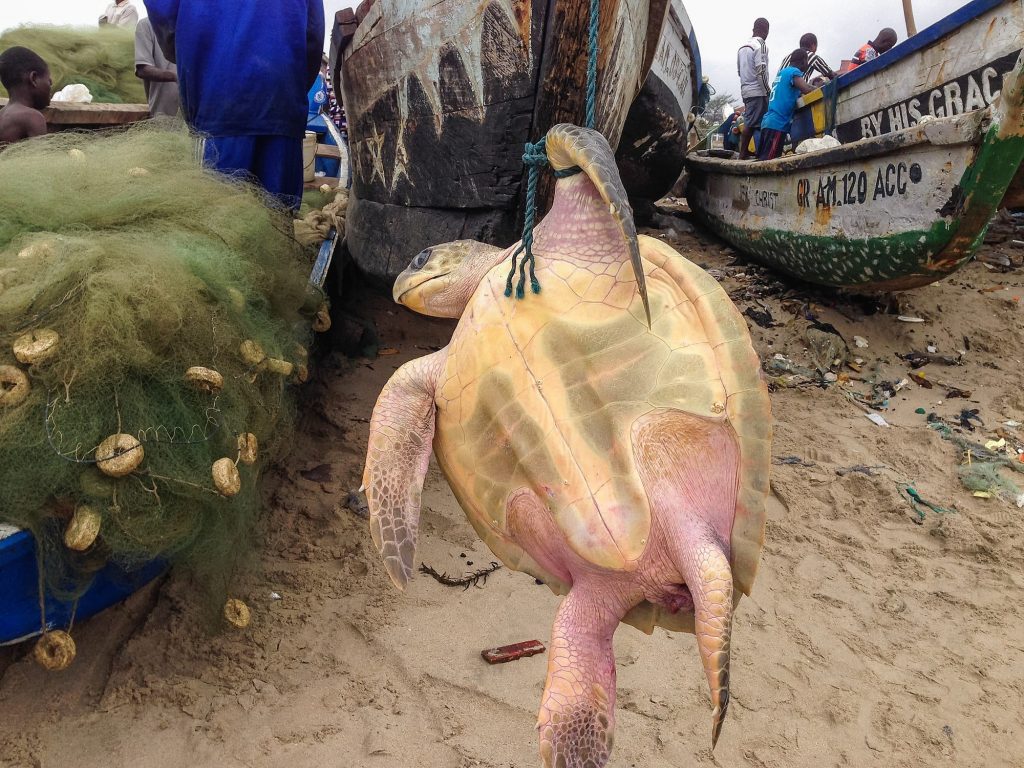
End Animal Slaughter contributor Matt Ellerbeck campaigns for turtles, whose survival depends on people changing their habits.
Turtles have been on this Earth for well over 200 million years. Now, however, the turtle is facing a grim future. Over half of the world’s turtle species are at risk of extinction.
The turtle’s current state of danger is due to the actions of people! There are several different factors contributing to the endangerment of the world’s turtles.
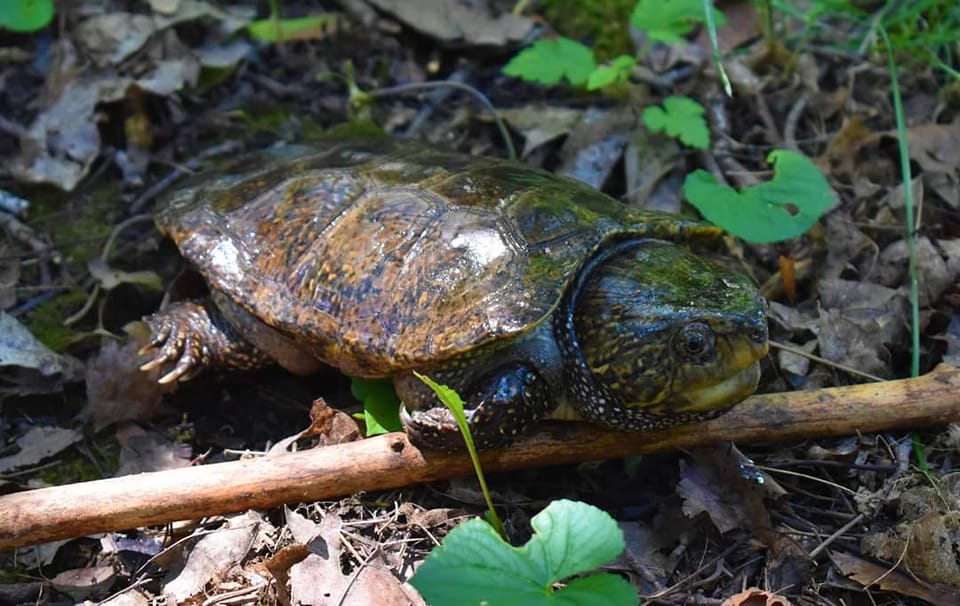 Chinese Big-Headed Turtle (Platysternon megacephalum). This turtle is a critically endangered species, declining due to being exploited and hunted for meat. Photo credit: Matt Ellerbeck
Chinese Big-Headed Turtle (Platysternon megacephalum). This turtle is a critically endangered species, declining due to being exploited and hunted for meat. Photo credit: Matt Ellerbeck
The biggest issue impacting these animals is the loss or fragmentation of their natural habitat. Turtle habitats of all kinds are being degraded and destroyed at an alarming rate. Wetlands are drained, forests are destroyed and waterfronts are developed. Turtles are literally losing their homes.
The loss of habitat and the increase of human activities and recreation on the water and on beaches also affects turtles and their nests in a negative way. Waterfront developments restrict turtles from prime basking and nesting sites. Containments and sewage runoff from such developments can also cause harm to turtles.
Pesticides, oils, chemicals, and industrial pollution may contaminate the habitats of turtles and their local prey items. When the turtles eat contaminated prey, they may become poisoned and die. These developments may also cause water levels to rise which can drown nest sites, destroying turtle eggs.
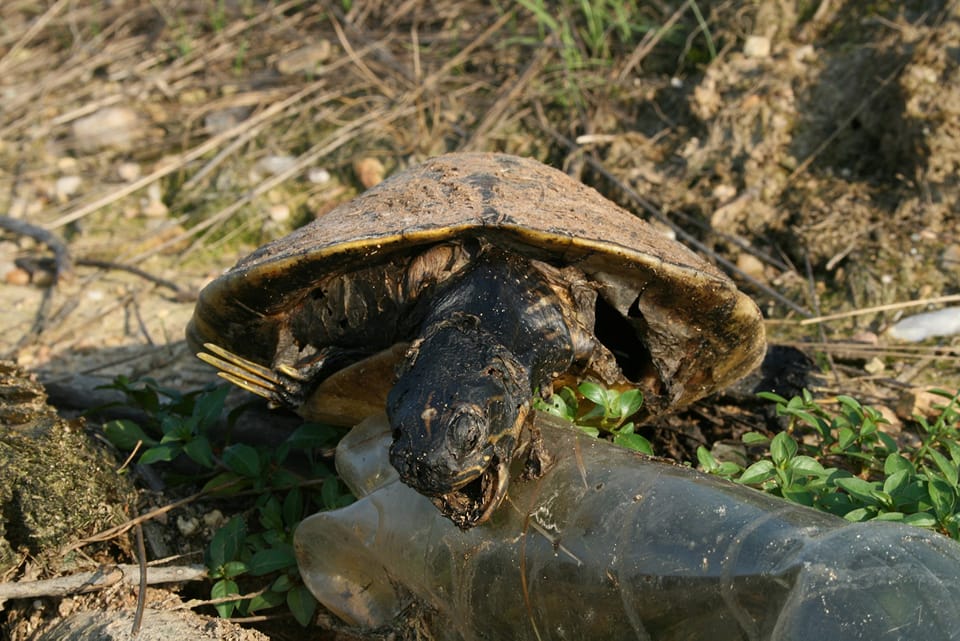
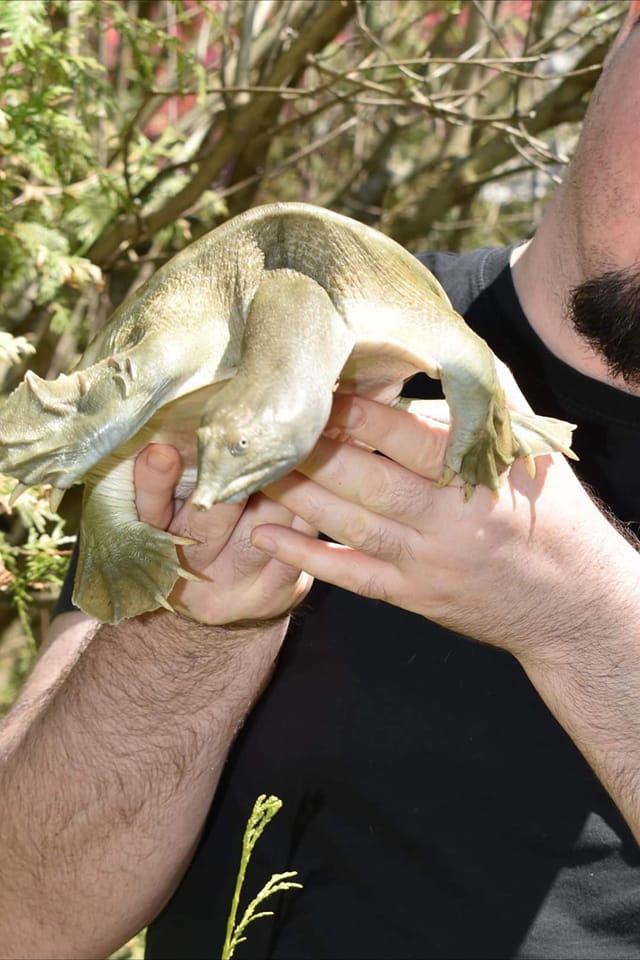
Matt with a Chinese Softshell Turtle (Pelodiscus sinensis). Populations of these turtles are decreasing. They are hunted for meat and are now listed as a Vulnerable Species.
Recreational activities on the water can also have devastating impacts on turtles, such as being killed or severely injured when they are hit by boats or water vehicles. Fishermen will often kill turtles for fear of their preying on game fish. Driving on beaches with cars and four wheelers can destroy nests in the sand. Killing turtles for sport is still widespread in parts of the United States.
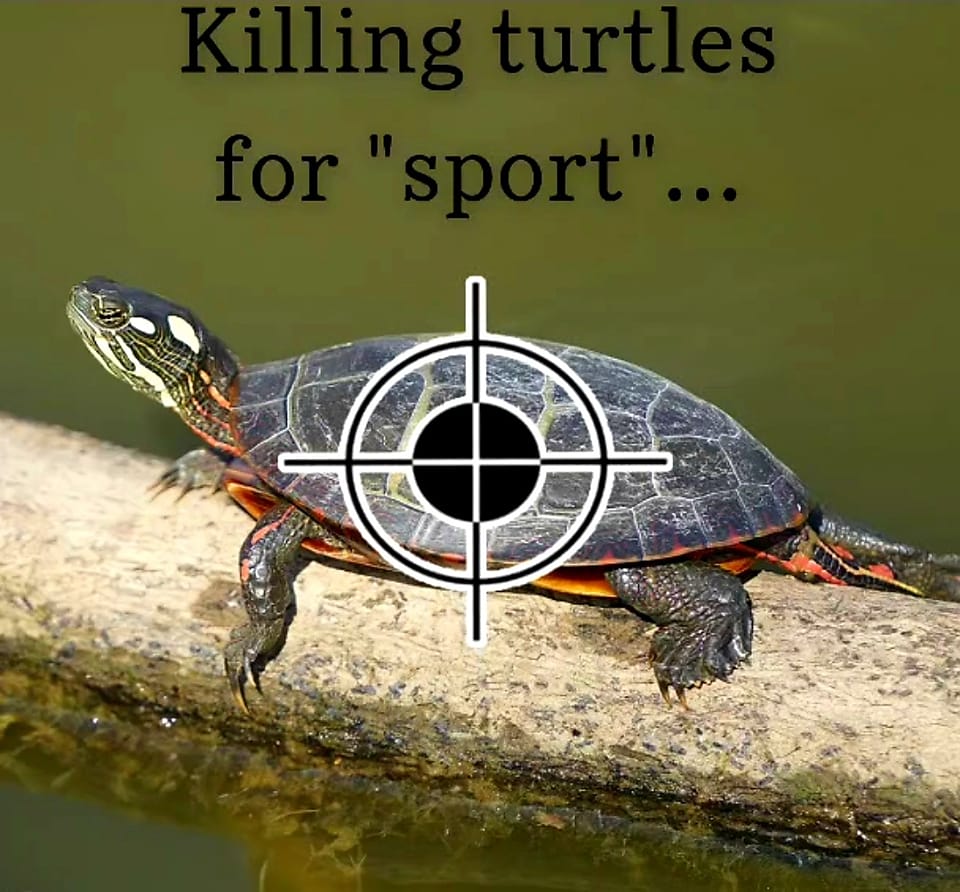
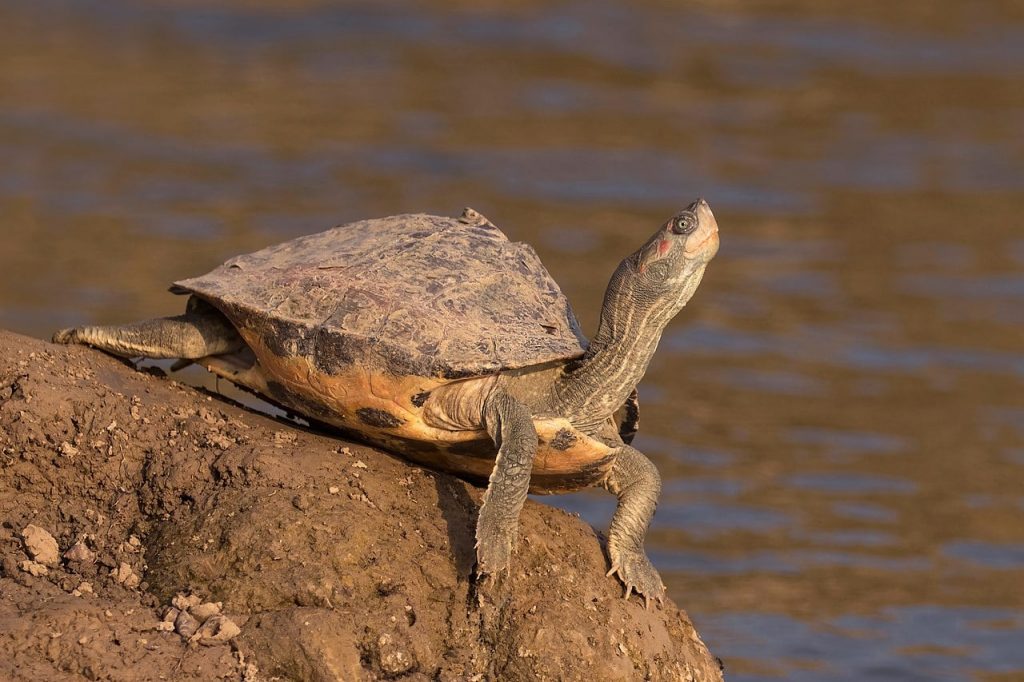 The Indian Tent Turtle (Pangshura tentoria) is impacted by various forms of exploitation. According to the IUCN, this species is collected for both domestic and international food markets and pet trade. Trade and seizures of subspecies circumdata have increased in recent years. Habitat loss and degradation also impacts certain populations of these turtles. Photo credit: Charles J. Sharp
The Indian Tent Turtle (Pangshura tentoria) is impacted by various forms of exploitation. According to the IUCN, this species is collected for both domestic and international food markets and pet trade. Trade and seizures of subspecies circumdata have increased in recent years. Habitat loss and degradation also impacts certain populations of these turtles. Photo credit: Charles J. Sharp
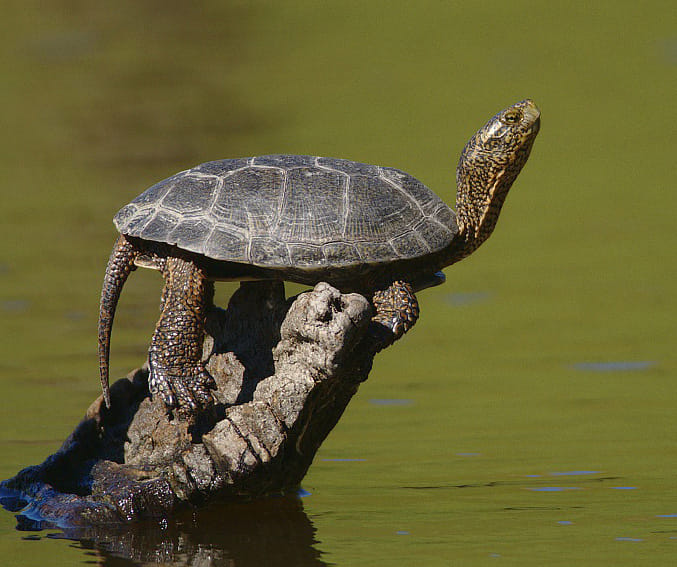
Where good habitat does exist it is often altered by roads and highways. This leads to the deaths of countless turtles on roads when they are struck by vehicles. Legions of turtles must cross roads when looking for nest sites to lay their eggs. This is particularly detrimental to turtle populations because not only does it lead to the death of a large portion of the breeding population (i.e. the mature female turtles) but the next generation of turtles is also killed off when the eggs are destroyed. This can lead to local populations of turtle species becoming exterminated. Even if the female turtles do successfully find nesting spots and lay their eggs, the baby turtles have a small chance of reaching maturity. Nests are often destroyed by predators like raccoons and skunks. While human activities have had negative impacts on turtles, they have helped increase these turtle predators. Human waste provides an unlimited food source for these predators. This has caused their populations to grow and this surplus of predators takes a very heavy toll on turtle nests.
Turtles, including rare and endangered ones, also suffer from being harvested from the wild at an almost unfathomable rate. Turtles and their eggs are collected for the pet trade, food markets, or to be used in traditional medicines. Sometimes the turtles and their eggs are captured right off nesting sites. Many turtle species are also hunted to be killed for meat.

When the factors above are combined, it accounts for massive losses. This is why the conservation and protection of these animals is paramount for their survival.
Follow Protect All Turtles on Facebook
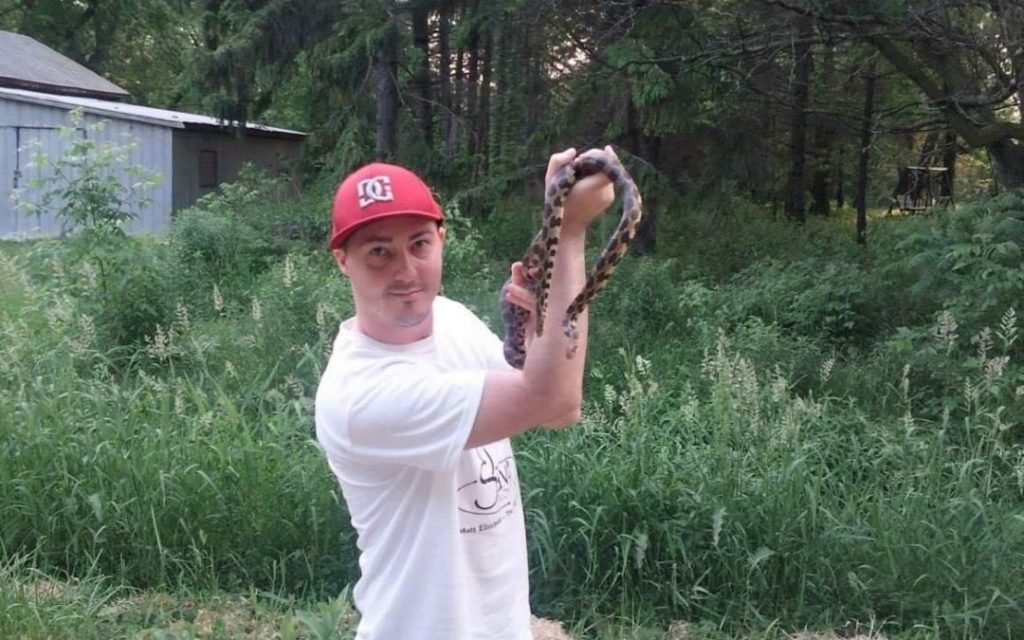
Canadian reptile advocate Matt Ellerbeck, whose preservation work has earned him both a Green Globe Nomination and an Award from the Cataraqui Conservation Foundation.
← NEXT
PREVIOUS →

